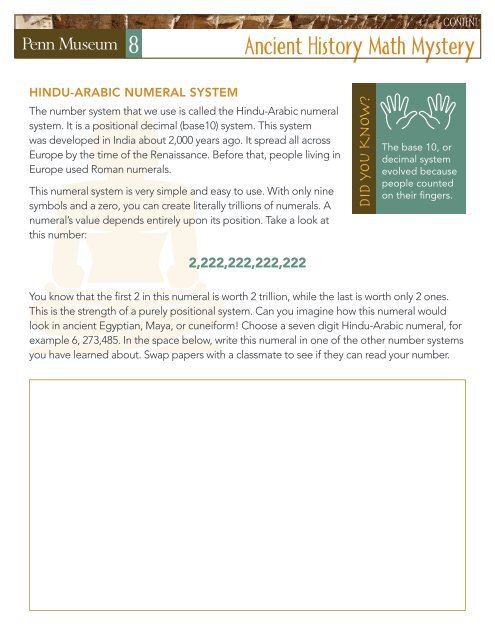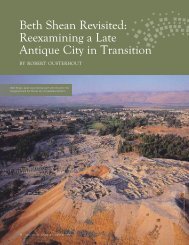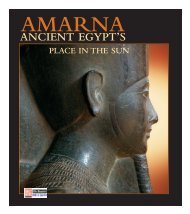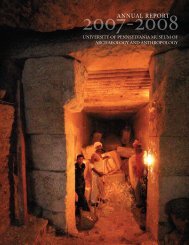Ancient History Math Mystery
Ancient History Math Mystery
Ancient History Math Mystery
You also want an ePaper? Increase the reach of your titles
YUMPU automatically turns print PDFs into web optimized ePapers that Google loves.
8<br />
HINDU-ARABIC NUMERAL SYSTEM<br />
The number system that we use is called the Hindu-Arabic numeral<br />
system. It is a positional decimal (base10) system. This system<br />
was developed in India about 2,000 years ago. It spread all across<br />
Europe by the time of the Renaissance. Before that, people living in<br />
Europe used Roman numerals.<br />
This numeral system is very simple and easy to use. With only nine<br />
symbols and a zero, you can create literally trillions of numerals. A<br />
numeral’s value depends entirely upon its position. Take a look at<br />
this number:<br />
CONTENT<br />
<strong>Ancient</strong> <strong>History</strong> <strong>Math</strong> <strong>Mystery</strong><br />
2,222,222,222,222<br />
Did you Know?<br />
The base 10, or<br />
decimal system<br />
evolved because<br />
people counted<br />
on their fingers.<br />
You know that the first 2 in this numeral is worth 2 trillion, while the last is worth only 2 ones.<br />
This is the strength of a purely positional system. Can you imagine how this numeral would<br />
look in ancient Egyptian, Maya, or cuneiform! Choose a seven digit Hindu-Arabic numeral, for<br />
example 6, 273,485. In the space below, write this numeral in one of the other number systems<br />
you have learned about. Swap papers with a classmate to see if they can read your number.
















